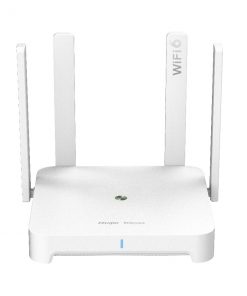Mikrotik PPPoE Server or short for Point to point protocol over ethernet is a network protocol that can connect communications between two networks or two different Ethernet ports by tunneling and virtual dial-up in the network.
One of the routers that can support PPPoE server and client configurations is Mikrotik. This article will discuss how to set the Mikrotik PPPoE.
Table of Contents
PPPoE Server Functions
On a Mikrotik router there are two types of PPPoE, namely the PPPoE server and the PPPoE client. However, in this article we will focus more on the PPPoE server.
What is PPPoE and what does it do for networks that use Mikrotik? I have explained the definition of PPPoE above.
Meanwhile, the PPPoE server function itself is a type of connection on a network.
Connection with Mikrotik PPPoE is usually used by ISPs or internet service providers which are commonly used as a substitute for static IP and dynamic IP that will be given to clients.
On the Mikrotik router used by the ISP which is usually used as the Mikrotik PPPoE server which is in charge of the dial up connection server based on the PPPoE client.
While the client router will set the PPPoE Mikrotik client which will dial up with the PPPoE username and password information provided by the ISP.
Check Router Products from NetData here:
How to Configure Mikrotik PPPoE
As said before, there are two PPPoE, namely PPPoE server and client, where the way to PPPoE Mikrotik server and client settings is different.
The following is a discussion of PPPoE server and client with a tutorial on how to set it up.
As for how to make a PPPoE server in Mikrotik, you can see the following steps.
- First, we must determine the ethernet interface that we will use to connect to the local network, namely the interface that is connected to the PPPoE client.
- For example, we will use ether1 which we will use to connect to the PPPoE server, but we have to add the IP address to the ether 5 interface in the following way:
- Open the Winbox application then log into the Mikrotik router.
- Then click the IP menu> Addresses> +.
- Fill in the IP address column with IP 172.50.1.0/24, then point the parameter column to ether1 then click OK.
- In order for local networks using PPPoE dial up connections to access the internet, we need to configure NAT or Network Address Translation, by clicking the IP> Firewall> NAT> + menu to create a new NAT rule.
On the General tab:
-
- Chain: srcnat
- Src.Address: 172.50.1.0/24
Action tab:
-
- Action: masquerade
- Then click Apply and OK.
- When finished setting up NAT, the next step is to set up the DHCP server on the ether1 interface which will be used as the PPPoE server. Here is a tutorial on how to configure a DHCP server on a Mikrotik router.
- The next step is to determine this address pool to function as the IP address range that will be used for each client who will dial up to our PPPoE server.
- The trick is to click IP> Pool, then double click one of the existing pools from the results of the previous DHCP server setup process.
- In the address field, fill in the IP range that will be used by the client, such as: 172.50.1.2-172.50.1.254 then click OK.
- The next step we will make a PPPoE server so that clients can dial up. The
- method is by clicking the PPP menu> PPPoE Server> + then configuring the following parameters:
-
- Service name: PPPoE server
- Interface: ether1
- If so, click OK.
- The next step is setting the profile by clicking the Profiles tab> + then filling in the following parameters:
- Name: 10Mbps (you can fill in the name as you wish)
- Local Address: 172.50.1.1 (fill in according to the gateway for the local network)
- Remote Address: DHCP_Pool2
- DNS Server: 203.128.86.35
- WINS Server: 103.30.86.36
- Rate limit RX / TX: 1200k / 1200klimited
- Parent Queue: 1Mbps-Limit (so that clients with a 1Mbps PPPoE profile will automatically be under the 1Mbps-Limit parent that has been created in the simple queue)
- Then click the OK button.
After that, in the last stage, we have to configure PPPoE Secret, PPPoE Secret is a username and password which will later be used in the Mikrotik PPPoE client settings. The trick is to click the Secret tab, fill in the following parameters:
-
- Name: PPPoE-NetData
- Password: NetData
- Service: PPPoE
- Profile: 1Mbps
- Remote Address: 172.50.1.2 (if you use the DHCP protocol then you don’t need to specify the IP in this column)
- If so, click OK .
At this point, the process of making a PPPoE server in Mikrotik has been completed, then the username and password that we created on the PPPoE server have dial-up from the ADSL modem or from the Mikrotik router which has been set as the PPPoE server client.
Then it will appear on the Mikrotik interface tab which will be used as a PPPoE server. Hopefully useful and keep up the spirit.
![]()










